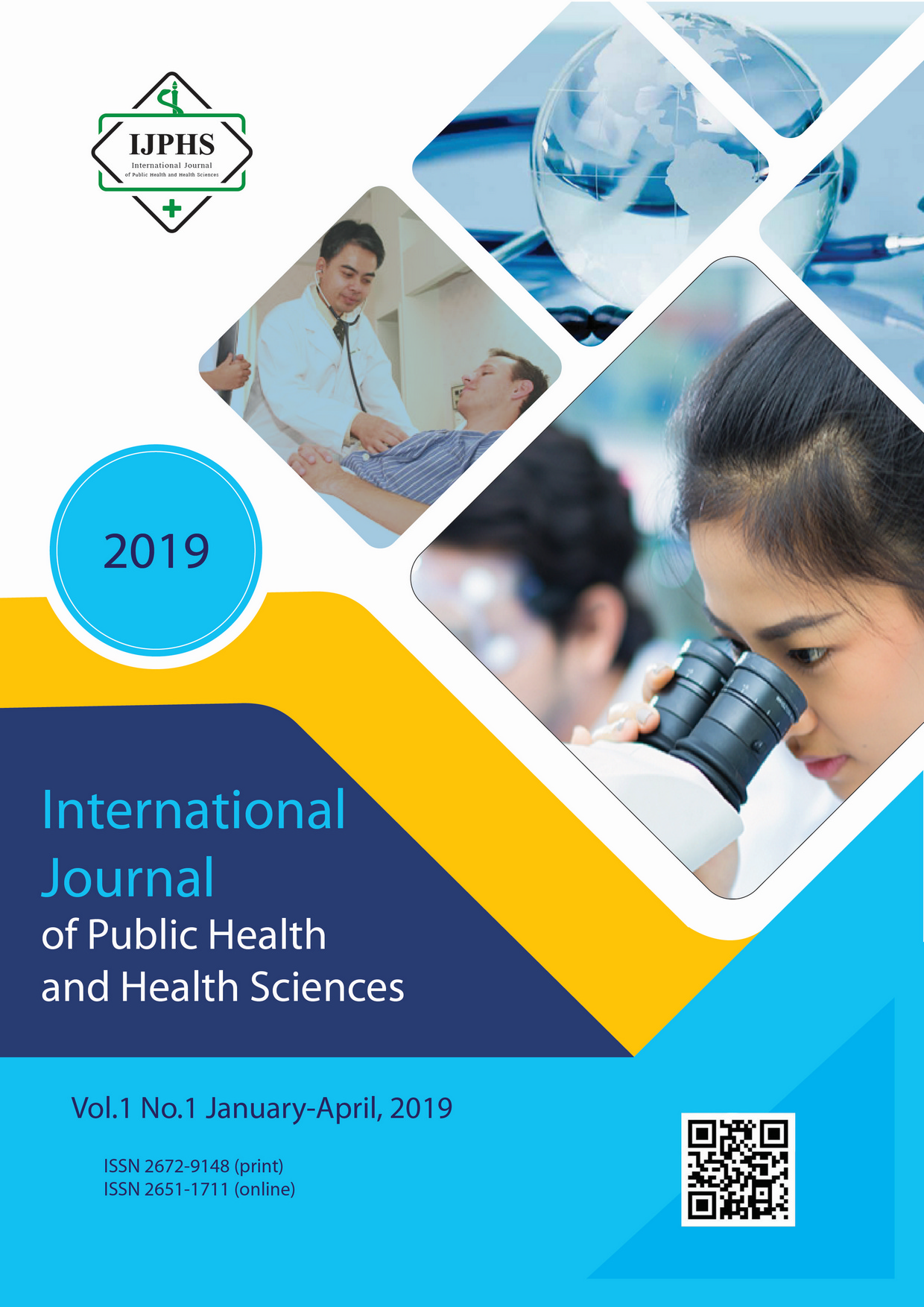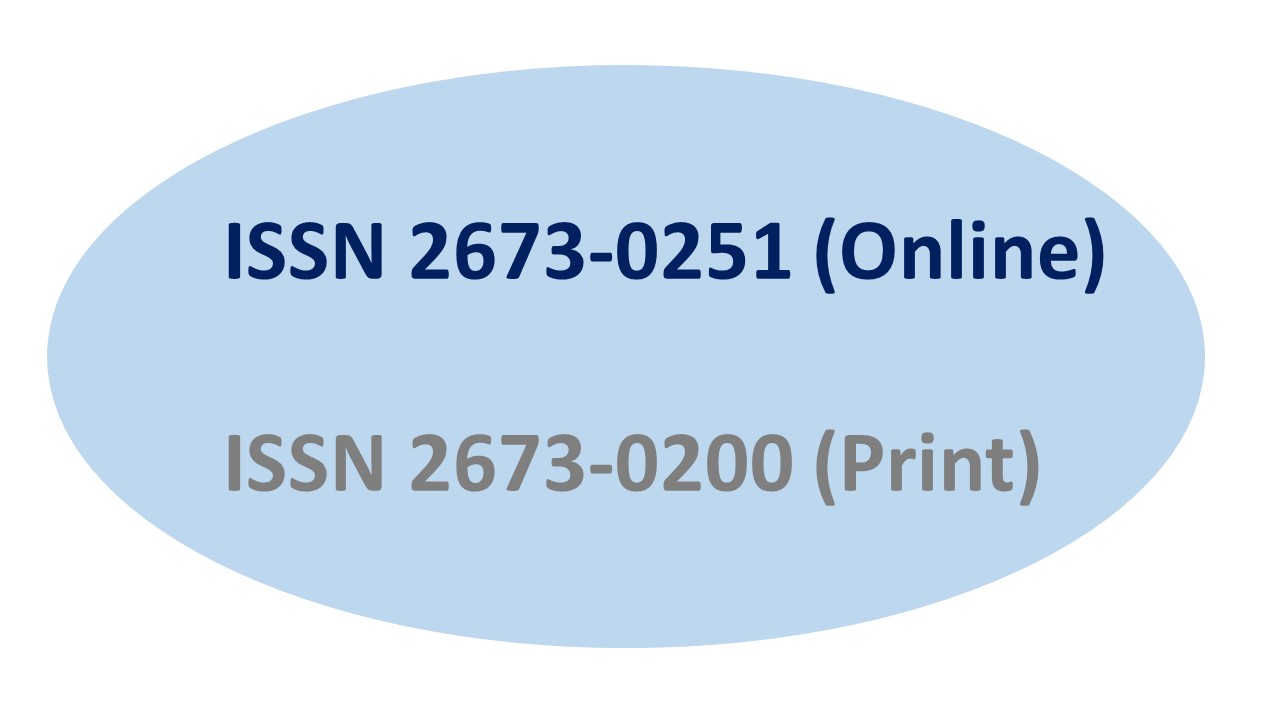Analytical Method Validation for Testing of Limit of High Molecular Weight Proteins in Filgrastim Biopharmaceutical Products
Keywords:
filgrastim, high molecular weight proteins, aggregation, method validation, size exclusion chromatographyAbstract
Filgrastim is a biopharmaceutical drug used for treatment chemotherapy-induced neutropenia in cancer patients. High molecular weight proteins (HMWP) of filgrastim can lead to loss of efficacy and immunogenicity. Limit of HMWP is one of the test items showing quality of filgrastim products. However, a compendial method used for determination of these impurities in pharmaceutical products has not yet been available. In this study, a size-exclusion chromatographic (SE-HPLC) method was validated for determination of HMWP of filgrastim. Method validation conducted parameters including specificity, limit of quantitation (LOQ) and precision. The results showed that the analysis of HMWP of filgrastim was not interfered by the excipients and other reagents in the analytical system. The method was sensitive with the lowest limit of quantitation of 0.0002 mg/mL. In addition, the percent relative standard deviation of repeatability and intermediate precision was in a range of 1.9-3.5% and 1.9-7.3%, respectively. These values were within the limits calculated from Horwitz’s equation. Thus, the size-exclusion chromatography (SEC) method was specific, sensitive, precise and valid for determination of HMWP of filgrastim in pharmaceutical products. This validated method has been utilized as a standard method to quantify the HMWP of filgrastim in biopharmaceutical products collected from all over nation by the Thai FDA.
References
[2] FDA. Biologics regulated products. Rockville, MD: FDA; 2009a. https://www.fda.gov/AboutFDA/CentersOffices/OfficeofMedicalProductsandTobacco/CBER/ucm123205.htm. (accessed July 20, 2011).
[3] Company TBR. Faster Drug Approval Process Will Boost the Biologics Market. Mark Res Blog 2018. https://blog.marketresearch.com/faster-drug-approval-process-will-boost-biologics-market (accessed March 9, 2019).
[4] Mulcahy AW, Predmore Z, Mattke S. The cost savings potential of biosimilar drugs in the United States. Perspectives (Montclair) 2014.
[5] Gámez-Belmonte R, Hernández-Chirlaque C, Arredondo-Amador M, Aranda CJ, González R, Martínez-Augustin O, et al. Biosimilars: Concepts and controversies. Pharmacol Res 2018;133:251–64. doi:10.1016/j.phrs.2018.01.024.
[6] Calam PD. WHO Informal Consultation on International Nonproprietary Names (INN) Policy for Biosimilar Products: p. 11.
[7] Biosimilars > Biosimilar and Interchangeable Products https://www.fda.gov/Drugs/DevelopmentApprovalProcess/HowDrugsareDevelopedandApproved/ApprovalApplications/TherapEUticBiologicApplications/Biosimilars/ucm580419.htm (accessed January 16, 2019).
[8] Jeske W, Walenga JM, Hoppensteadt D, Fareed J. Update on the safety and bioequivalence of biosimilars – focus on enoxaparin. Drug Healthc Patient Saf 2013;5: p. 133–41. doi:10.2147/DHPS.S28813.
[9] Berkowitz SA, Engen JR, Mazzeo JR, Jones GB. Analytical tools for characterizing biopharmaceuticals and the implications for biosimilars. Nat Rev Drug Discov 2012;11: p. 527–40. doi:10.1038/nrd3746.
[10] Bennett CL, Chen B, Hermanson T, Wyatt MD, Schulz RM, Georgantopoulos P, et al. Regulatory and clinical considerations for biosimilar oncology drugs. Lancet Oncol 2014;15: p. e594–605. doi:10.1016/S1470-2045(14)70365-1.
[11] Driver JL, Raynie DE. 15 Method development for biomolecules. In: Ahuja S, Rasmussen H, editors. Sep. Sci. Technol., vol. 8, Academic Press; 2007: p. 425–39. doi:10.1016/S0149-6395(07)80021-3.
[12] Boschetti E, Jungbauer A. 15 Separation of antibodies by liquid chromatography. In: Ahuja S, editor. Sep. Sci. Technol., vol. 2, Academic Press; 2000: p. 535–632. doi:10.1016/S0149-6395(00)80062-8.
[13] Hong P, Koza S, Bouvier ESP. Size-Exclusion Chromatography for the Analysis of Protein Biotherapeutics and their Aggregates. J Liq Chromatogr Relat Technol 2012;35: p. 2923–50. doi:10.1080/10826076.2012.743724.
[14] Philo JS. A critical review of methods for size characterization of non-particulate protein aggregates. Curr Pharm Biotechnol 2009;10: p. 359–72.
[15] Yu C-M, Mun S, Wang N-HL. Phenomena of insulin peak fronting in size exclusion chromatography and strategies to reduce fronting. J Chromatogr A 2008;1192: p. 121–9. doi:10.1016/j.chroma.2008.03.055.
[16] Brange J, Langkjaer L, Havelund S, Vølund A. Chemical stability of insulin. 1. Hydrolytic degradation during storage of pharmaceutical preparations. Pharm Res 1992;9: p. 715–26.
[17] Oliva A, Fariña J, Llabrés M. Development of two high-performance liquid chromatographic methods for the analysis and characterization of insulin and its degradation products in pharmaceutical preparations. J Chromatogr B Biomed Sci App 2000;749: p. 25–34. doi:10.1016/S0378-4347(00)00374-1.
[18] Watson E, Kenney WC. High-performance size-exclusion chromatography of recombinant derived proteins and aggregated species. J Chromatogr A 1988;436: p. 289–98. doi:10.1016/S0021-9673(00)94586-2.
[19] Souza LM, Boone TC, Gabrilove J, Lai PH, Zsebo KM, Murdock DC, et al. Recombinant human granulocyte colony-stimulating factor: effects on normal and leukemic myeloid cells. Science 1986;232: p. 61–5. doi:10.1126/science.232.4746.61.
[20] Lu HS, Clogston CL, Narhi LO, Merewether LA, Pearl WR, Boone TC. Folding and oxidation of recombinant human granulocyte colony stimulating factor produced in Escherichia coli. Characterization of the disulfide-reduced intermediates and cysteine----serine analogs. J Biol Chem 1992;267: p. 8770–7.
[21] Vanz AL, Renard G, Palma MS, Chies JM, Dalmora SL, Basso LA, et al. Human granulocyte colony stimulating factor (hG-CSF): cloning, overexpression, purification and characterization. Microb Cell Factories 2008;7: p. 13. doi:10.1186/1475-2859-7-13.
[22] U.S Food & Drug Administration. Neupogen® Filgrastim.
[23] Wang W. Instability, stabilization, and formulation of liquid protein pharmaceuticals. Int J Pharm 1999;185: p. 129–88. doi:10.1016/S0378-5173(99)00152-0.
[24] Beveridge RA, Miller JA, Kales AN, Binder RA, Robert NJ, Harvey JH, et al. A Comparison of Efficacy of Sargramostim (Yeast-Derived RhuGM-CSF) and Filgrastim (Bacteria-Derived RhuG-CSF) in the Therapeutic Setting of Chemotherapy-Induced Myelosuppression. Cancer Invest 1998;16: p. 366–73. doi:10.3109/07357909809115775.
[25] International Conference on Harmonization (ICH). Analytical Procedure Development and Revision of Q2(R1) Analytical Validation 2005.
[26] Thai Food and Drug Administration, Bureau of Drug Control. Searching and Statistic Information; Filgrastim. https://www.fda.moph.go.th/sites/Drug/ (accessed July 22, 2018).
[27] British Pharmacopoeia 2018. Filgrastim Concentrated Solution. Br. Pharmacopoeia 2018, vol. I, London: Stationery Office: p. I-1024–7.
[28] Filgrastim. US Pharmacop.-Natl. Formul. USP 40 NF35, vol. 1, Rockville, MD: United States Pharmacopeial Convention, Inc.; 2017: p. 4196–202.
[29] Rosenberg AS. Effects of protein aggregates: an immunologic perspective. AAPS J 2006;8: p. E501–E507.
[30] Shrivastava A, Gupta VB. Methods for the determination of limit of detection and limit of quantitation of the analytical methods. Chron Young Sci 2011;2: p. 21. doi:10.4103/2229-5186.79345.
[31] Horwitz W, Albert R. The Horwitz ratio (HorRat): A useful index of method performance with respect to precision. J AOAC Int 2006;89: p. 1095–109.
[32] Tange M, Matsumoto A, Yoshida M, Kojima H, Haraguchi T, Uchida T. Comparison of the Adsorption of Original and Biosimilar Preparations of Filgrastim on Infusion Sets and the Inhibition of Adsorption by Polysorbate 80. Chem Pharm Bull (Tokyo) 2017;65: p. 36–41. doi:10.1248/cpb.c16-00478.
[33] Commentary Second Supplement USP 36-NF 31 https://www.uspnf.com/sites/default/files/usp_pdf/EN/USPNF/revisions/2013-10-25_usp36-nf31_2s_commentary_updated.pdf (accessed September 21, 2018).
[34] International Conference on Harmonization (ICH). International Conference on Harmonization (ICH) of Technical Requirements for the Registration of Pharmaceuticals for Human Use, Validation of analytical procedures: Text and Methodology. ICH-Q2B 1996.
[35] Yin H. Method and Validation basics-HPLC case study 2011.
Downloads
Published
Issue
Section
License
If the manuscript is accepted for publication, copyright of the article shall be assigned to the IJPHS. After acceptance of a manuscript, the authors will be requested to complete a copyright transfer agreement form







